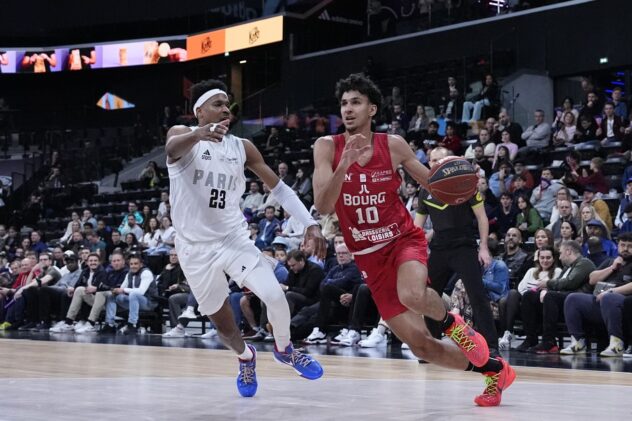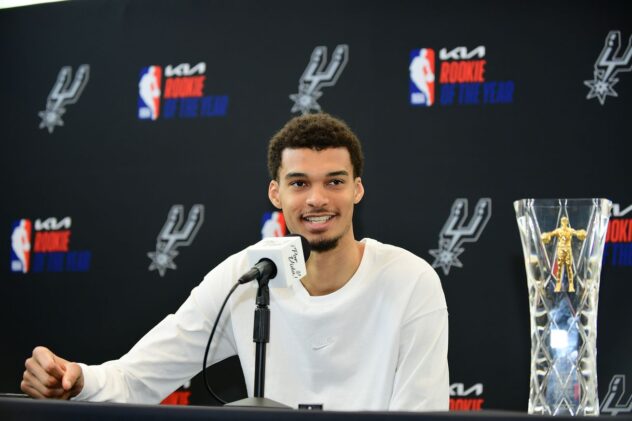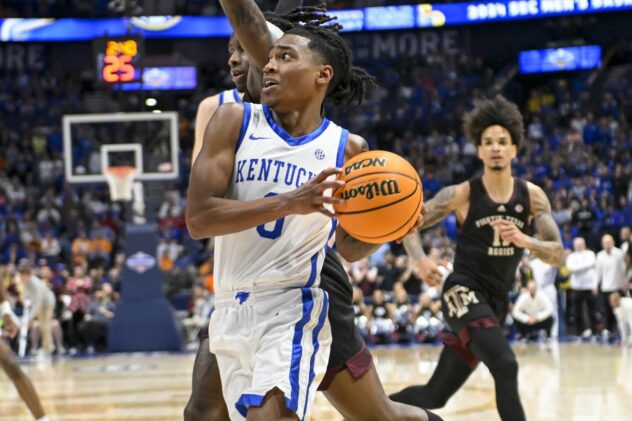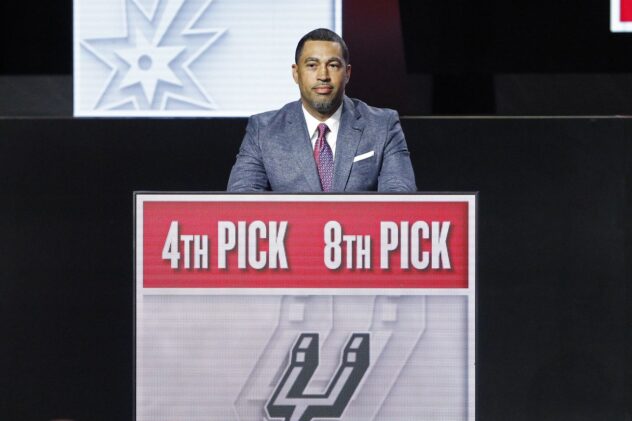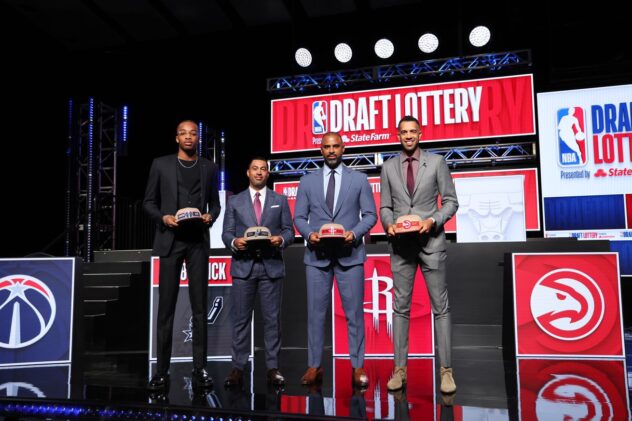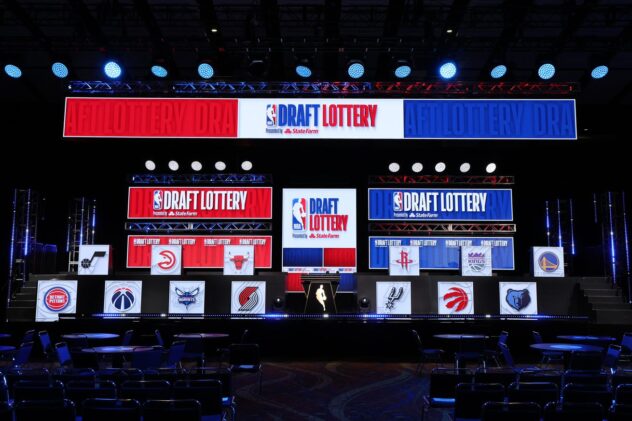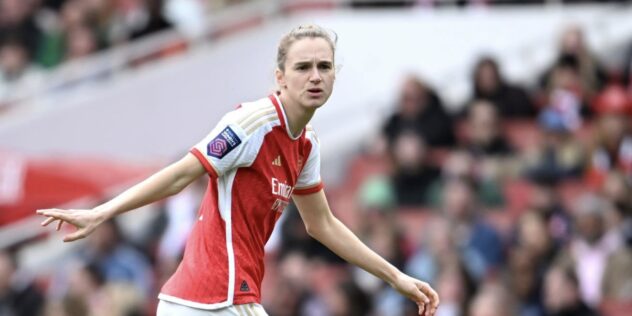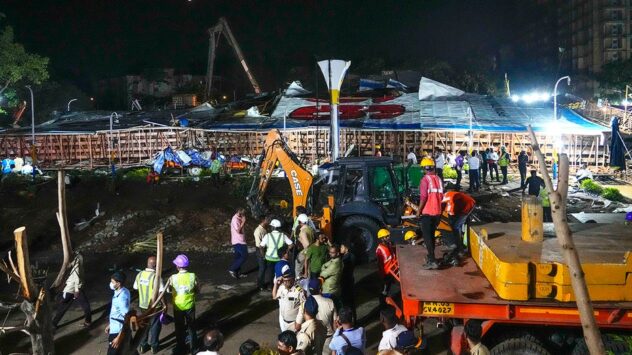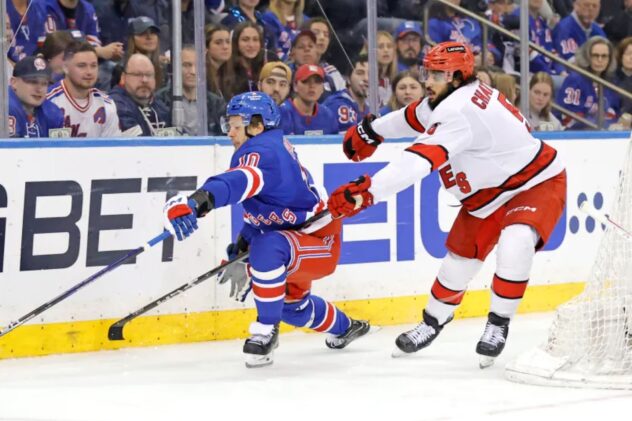The Spurs’ offense creates too many bad shots
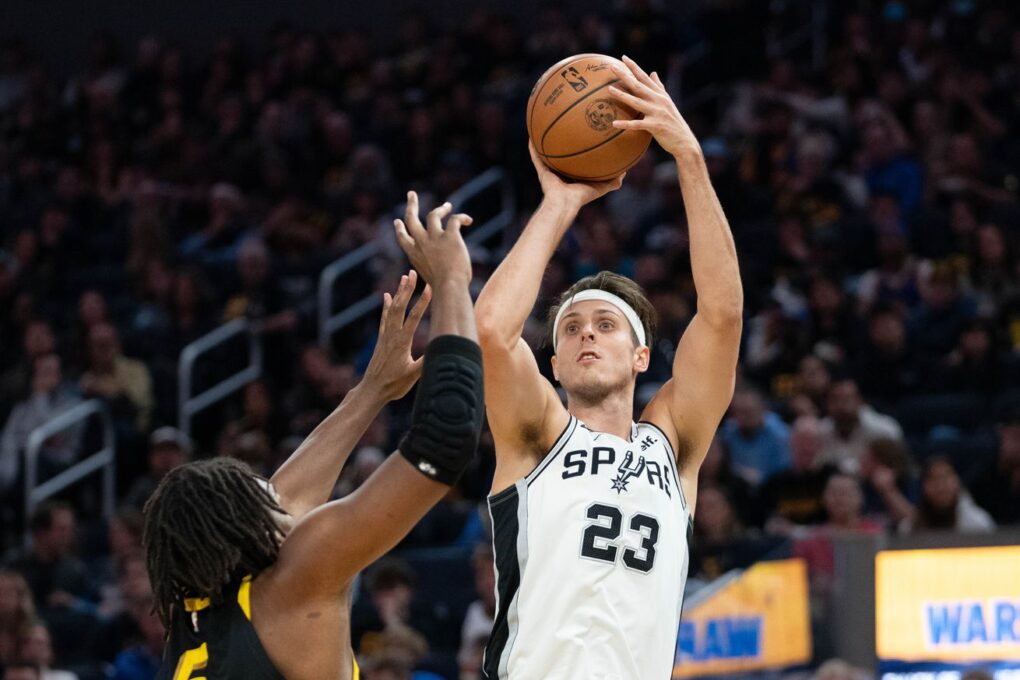
A bad mix of personnel and system resulted in the Spurs taking too many inefficient shots that they were simply not talented enough to make.
For many reasons, the Spurs are among the worst teams in the league. All that matters this early in the rebuild is to figure out which issues are temporary and the result of youth and a lack of familiarity in the roster and which point to more serious long-term problems.
The team’s shot profile seems to be among the latter. San Antonio doesn’t have the talent to be a great offensive squad, but the fact that the team’s field goal attempts are coming from inefficient areas suggests that the system might be at fault. Let’s take a closer look.
Defenses are happy with the shots the Spurs are taking
There is no perfect shot profile and different teams can be successful on offense by doing things that suit their personnel. When analyzing a shot profile, what matters is figuring out whether the offense is imposing its will and taking the shots it wants or just settling for what the defense gives it.
The Spurs are in the latter camp. San Antonio ranks 25th in the league in shot attempts at the rim and second to last in corner threes, which is easily explained by their lack of a driving game. The Silver and Black, after years of ranking near the top of the league in drives per game, now sit at 26th in terms of volume, last in terms of field goal percentage on drives, 18th in assist percentage and 29th in points created on drives.
The prominence of the Sochan-Collins duo in the first 20 games is largely to blame for the decline since Sochan can’t get past his man and Collins can’t consistently draw the opposing center out of the paint. Collins has to pop instead of roll after screens in hopes of creating space, taking away an inside threat, but that simply doesn’t work because he struggles with outside shooting. The big can just pack the paint, which means the defense doesn’t have to move, so there are no emergency rotations that leave someone open from the corner. Instead, the Spurs take the fifth most threes from above the break, which is a shot opponents are often happy to allow from their non-shooting bigs and able to contest from the actual threats.
Layups and open threes are the shots a good offense would ideally yield, but it’s impossible to always get them. The mid-range area can be a dangerous weapon when stars who can score efficiently from there utilize it. San Antonio uses it a lot, ranking third in the league in attempts from in-between per game, but can’t convert those attempts as often as they should to have a viable mid-range heavy offense. Devin Vassell is an absolute assassin on those looks and Malaki Branham is a weapon, albeit on limited attempts, but Victor Wembanyama has not been consistent and he takes the most mid-range shots on the team by a lot. Others, like Sochan and Johnson, are not good either. Making matters worse, the Spurs don’t even have players who can hurt opponents on shots in the paint but not at the rim, also known as floater range, so even if they get some room on drives, they struggle with the last line of defense.
/cdn.vox-cdn.com/uploads/chorus_asset/file/25153877/Spurs_shot_charts.gif)
A lack of a driving game combined with a mid-range heavy shot profile resulted in the least amount of free throws in the league. Nothing about where the Spurs take their shots makes them uncomfortable to guard.
The Spurs need either a new system or new personnel
It’s possible to see the issues as caused by personnel, not the system. But that only raises another question: why commit to it to start the season instead of adjusting to fit the players’ strengths? In the simplest terms, if Pop wanted to establish an offense that relied on bigs to facilitate and space the floor and slashers who could put pressure on the defense — and history suggests he does — it made no sense to go with the units he used for so long.
The Spurs experimented with bigger ball handlers who weren’t traditional point guards last year, first with Josh Primo and then Josh Richardson picking up backup point guard duties off the bench. However, that’s not comparable with trying to turn Sochan into a point guard overnight. The bigs were facilitating a lot from the perimeter, even when Jakob Poeltl was around, but the offense didn’t rely on that passing as much to create shots at the rim through cuts and it certainly didn’t require the center to be a knockdown shooter to provide spacing. Integrating Victor Wembanyama has proved challenging, but he often operates outside the system instead of within it, which is a separate issue. Johnson is at his best when another perimeter player gets the defense moving, but he’s now often catching the ball at the top of the arc and driving into a packed paint. The one player of the core who seemed suited for this offense is Devin Vassell, due to his mid-range excellence.
It’s understandable to have issues with a core filled with developing players. Still, a few guys are either behind schedule in terms of improving specific skills or won’t be a fit for this system. Zach Collins will need to be a shooter on top of a good passer and post threat or play with someone who can create in the pick-and-roll to be a dive man more often. Johnson will either need to become an elite floor spacer to become a complementary player or a better ball handler to take more shot creation duties. Sochan would have to drastically improve in several areas simultaneously to be a viable option as a point guard, which is why giving up on making him one makes sense. And it’s unclear what Wembanyama would have to do at this point, but in his case, there seems to be potential for go-to scoring that would make the worries disappear.
This system run by the players that were tasked with executing it was doomed to produce an inefficient shot profile. Either the offense or the people executing it needed to change. Collins is not Jokic or Sabonis, Sochan is not a point forward who can make the defense collapse on drives, Johnson is not a crafty ball handler with a reliable mid-range pull-up and Wembanyama is not Kevin Durant or Dirk Nowitzki. The results were not going to be good.
For the Spurs, it’s all about long-term vs. short-term goals
The idea behind the Spurs’ offense is intriguing. Instead of relying on a ball-dominant perimeter player to create, Gregg Popovich is splitting those duties between a center and several wings who can, at least in theory, attack using a high screen or hand-off in the half court. Everyone is expected to push the pace and move without the ball and Wemby is given the freedom that stars get. On paper, the system is modern and offers enough structure without curtailing improvisation. A veteran team with elite talent could be dangerous while using it.
These Spurs aren’t talented or coordinated enough to run it, though, and making them do it not only produces losses but also worrisome individual performances. A simpler offense with fewer experimental lineups would almost surely yield better results at both the team and individual levels in the short term. Recent changes to units suggest Pop is realizing this, but it remains to be seen whether there’s enough talent in the roster to make the system work.

